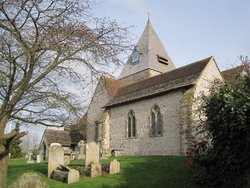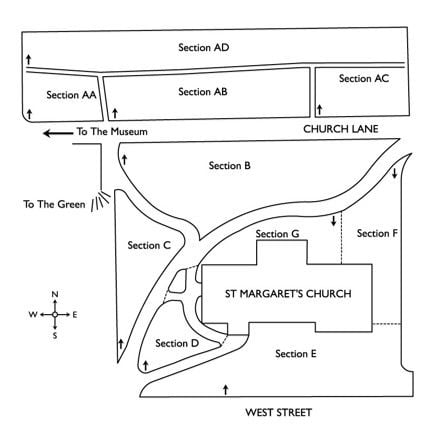Recording the Inscriptions at St Margaret's Churchyard

In 2005, concerned at the deterioration of some of the headstones in St Margaret's churchyard and because we are often asked to hep in locating family gravestones, we decided to update the list of monumental inscriptions. The original burial plans are no longer kept in the Church and while searching for them at East Sussex Record Office, a slim volume was discovered entitled ‘Monumental Inscriptions of Ditchling Churchyard’ compiled in 1877 by Frederick William Town Attree. This quickly became an invaluable tool for checking inscriptions that are hardly legible today, more than 130 years later.
After completing the listing of all the inscriptions, we were then curious to learn more about the names on the memorials, some belonging to long-established village families and others whose background and identity were a mystery. A new phase of research began as we uncovered many fascinating stories; some lives were cut tragically short or were to end in the workhouse or asylum, others passed contentedly into old age amongst family and neighbours. These stories, together with an account of the history of St Margaret's Churchyard, have been collected together to form one publication, 'In Memoriam: History and Design in a Village Churchyard' and 'Life's Work Well Done: a Collection of Life Stories'. We highly recommend this publication to all those searching the roots of their family in Ditchling.
How to find a grave

For the purposes of finding individual graves, the churchyard has been divided into ten separate sections. Each grave is identified by a three part reference comprising letters to show the section, a number to show the row and an individual grave number.
This means that grave number B-8-37 would be the thirty seventh grave in section B, found in row 8.
Click here to access the searchable listing of graves in St Margaret's Churchyard
Please note that St Margaret's churchyard is not the only graveyard in the village; there are others at the Old Meeting House in the Twitten as well as the Burial Ground in the Lewes Road and at St George’s Retreat.